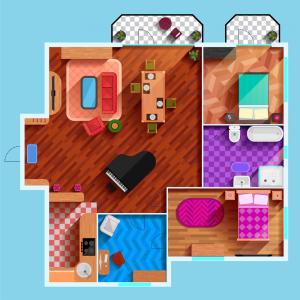
What’s All The Fuss About Universal Design?
Ideally, a person’s home shouldn’t include obstacles for daily living. Universal design, a term coined by architect Ronald Mace, revolves around designing “built environments” to be both aesthetically pleasing and to “be able to be used by everyone, regardless of age, ability or status in life” to the greatest extent possible.
As a homeowner, this means making design choices and upgrades to ensure your home remains useful and comfortable as you age or should you become even slightly disabled. Since the current U.S. population is increasingly growing older, and more people want to age in place, homes featuring universal design features may command more in resale value and enjoy stronger interest from buyers.
Elements of universal design include:
Open floorplans that offer a 5-foot turning space in every room and 36 inches of clear space in front of all appliances and counter spaces.
Thresholds on all interior doorways should be flush and the thresholds on external doorways shouldn’t exceed a half-inch in height.
At least one step-free entrance option for wheelchair, stroller and walking access. Earth berming is preferable to ramps.
Wider doorways and hallways, with doorways at least 32 inches wide (preferably 34 to 36 inches) and hallways at least 42 inches wide.
Front-loading appliances (ovens, washers, dryers, dishwashers, etc.) should be raised enough that they can easily be accessed from seated or standing positions. Likewise, refrigerators should be sized for ease of use while sitting or standing.
Workspaces should offer flexible counter heights with open space below for seated use and associated storage at eye level, all of which can be easily reached while standing or seated. All workspaces should also include task lighting.
At least one bedroom and one bathroom should be located on the ground level with laundry facilities on the same level.
Lever-style door handles and faucets should be used throughout the house and loop handle pulls on cabinet doors and drawers.
Handrails and guardrails should be installed on any stairs or ramped areas, inside and out. Also install (or have the ability to easily add) handrails in the shower and both sides of the toilet.
Touch-activated lamps and large rocker-style or hands-free lighting controls between 44 and 48 inches high are preferable to harder-to-handle light switches.
Lots of electrical outlets, to avoid stringing wires that may create trip hazards. For easier access, place them at least 18 inches above the floor.
At least half the storage space should be less than 54 inches high, with adjustable closet rods, adjustable shelves, and pantry shelves with pullout options for easier access.
Flat, open surfaces on both sides of entry doors to set down groceries and other goods while preparing to enter or exit the home.
At least one full-length mirror in the bathroom or bedroom.
Curbless shower stalls that are at least 5-feet by 4-feet in size with an integrated seat and easy-to-reach water and shower controls.
Toilets centered 18 inches from any sidewall, cabinet or tub with a 36-inch clearance in front of the toilet.
Knee space under sinks and the sink bowl mounted close to the front of the countertop.
Wheelchair-friendly floor finishes in general living areas and slip-resistant floor finishes in bathrooms. Eliminate (or firmly secure) any area rugs.
If you are building a home or renovating your existing home, these are just a few of the many considerations to incorporate into your plans.
To learn more, consult with a universal design expert. It could make a huge difference in how long you will be able to remain in your existing home as you age and/or encounter health challenges. Or if you decide to sell, it will make your home more desirable in today’s real estate market.
